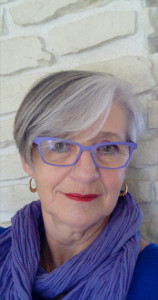
The end of the social in art?

Very nice article by Catherine Francblin in Art Press for all those who wish to understand the issues underlying the current discourse on art. To confront these thoughts with their own feelings and reflections. The title of this paper, entitled "On Art and Activism", clearly indicates its orientation. But its scope is far greater than that of yet another essay on the art of form and the world in substance. There is no question here as to whether the painter of Guernica was indeed a pacifist.
Criticism of criticism
It all begins with a microscopic examination of the critic himself. This phenomenon has often been denounced here: the press needs new artists every month who can compete in interest with the great figures of art that it cannot write about for years in each issue. Unlike Rock&Folk, whose covers have been open to the Rolling Stones for 60 years. In art, fortunately, it is our duty to renew ourselves!
Problem
New artists do not provide enough fresh meat for the machine. So we dig up and recycle creators who were considered second-rate in their time compared to monuments like Kandinsky, Picasso, Warhol... Is this practice assumed and systematized? Is it industrialized? Catherine Francblin is visibly circumspect about the "strange" unanimity with which this archaeology of the underestimated artistic League 2 is undertaken. She even sees in it a potential "distinctive mark of our time". With, at the end of the day, "a new tiering of values and a new cartography". Translate: a new cartography of modern and contemporary art.
Forgotten by History
What are we to make of this idea of rewriting history worthy of George Orwell's dystopian 1984? That the phenomenon is not limited to art? In art, in any case, this work of rehabilitating the forgotten of life, especially social and political, is everywhere. Critics take several examples. The most emblematic and most consequential is the exhibition at the Centre Pompidou entitled "Elles font l'Abstraction". A hundred or so hitherto "invisible" female artists are presented in a "pleasant" exhibition, but which only touches on the question of the complexification and diversification of abstract art generated by this increase in the number of abstract artists.
Invisible women?
What emerges is a simple enrichment of "remarkable works" from this period of humanity's heritage. But no revolution. The same questions were obviously being asked silently in the female shadow and in the limelight and in front of the male microphones. The most pitiful inequality has obviously weighed in. But what about the rare female exceptions in the artistic gotha? Faced with the spectres of all these so-called equally despised talents, one is almost afraid to concede that Sonia Delaunay has obviously gained her fame through the lottery or through a canape promotion. Like Lydia Clark in Brazil? And the representatives of the Polish and Russian avant-garde, Goncharova, Popova or Kobro?
Justifying art
The same applies to the project Not Fully Human, Not Human at All, set up by Kadist. A selection of 1,600 works from the five continents ultimately gives rise to an exhibition of ten artists united under the banner of "dehumanisation" with an "imperialist" and obviously "colonialist" tendency. But everyone obviously wants a great artistic "decompartmentalization". Between artists' genres as well as between distinct arts. So it's good that art seems to be the ideal medium to spread political and social messages. If it does this job well and brings it to a conclusion, the world will be more beautiful. And art, by handing in its apron, will perhaps be allowed to speak to us about itself again.
To conclude, Catherine Francblin takes a step ahead of this future spirit of openness by giving us, in the midst of the hustle and bustle, the names of her discoveries made on the road: Jacoda Buic, llona Keserü, Gego, Falkenstein and Ruth Asawa. Very classy.
Illustration: Kapwani Kiwanga - The Marias 2 - 2020





































































